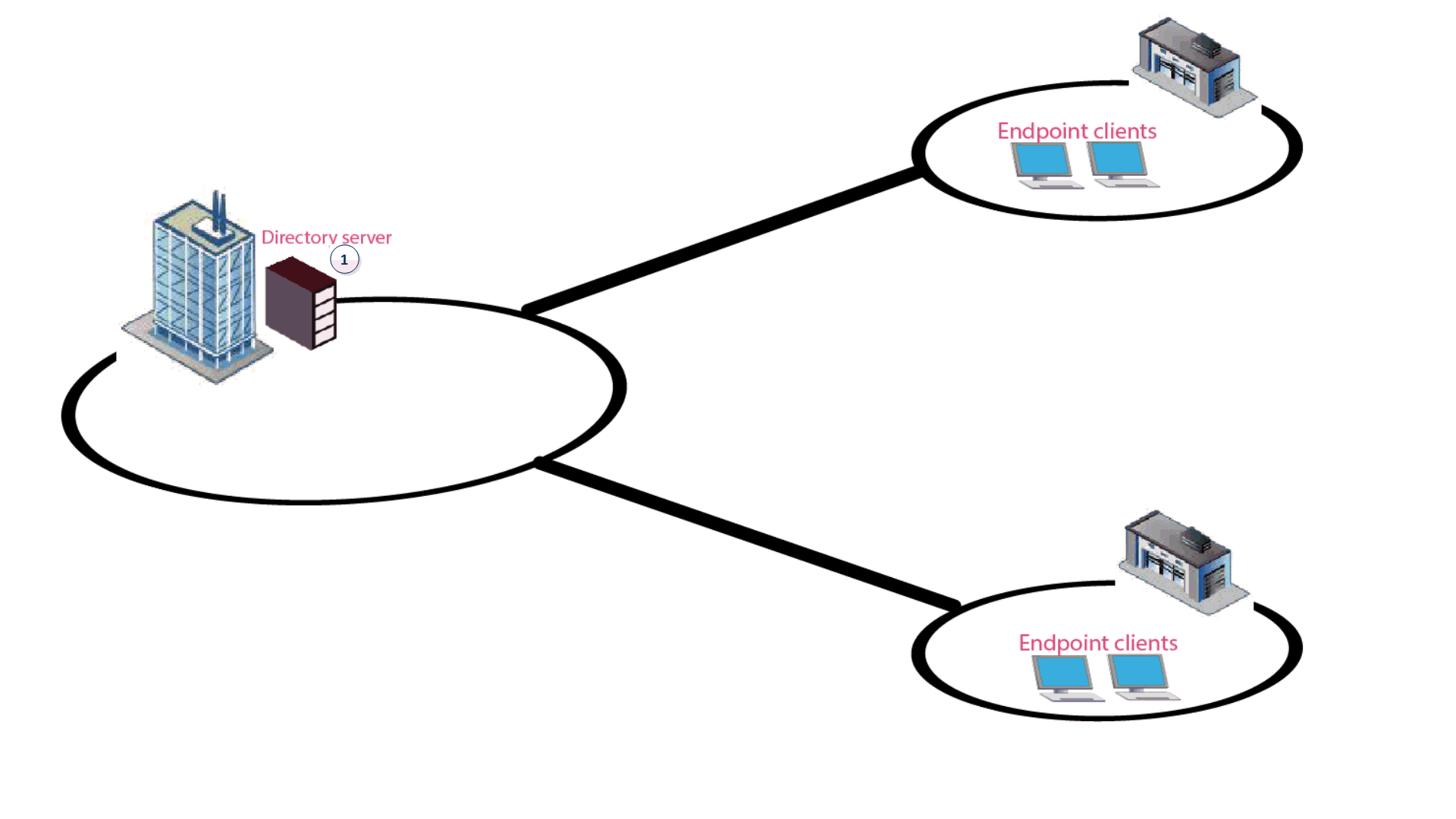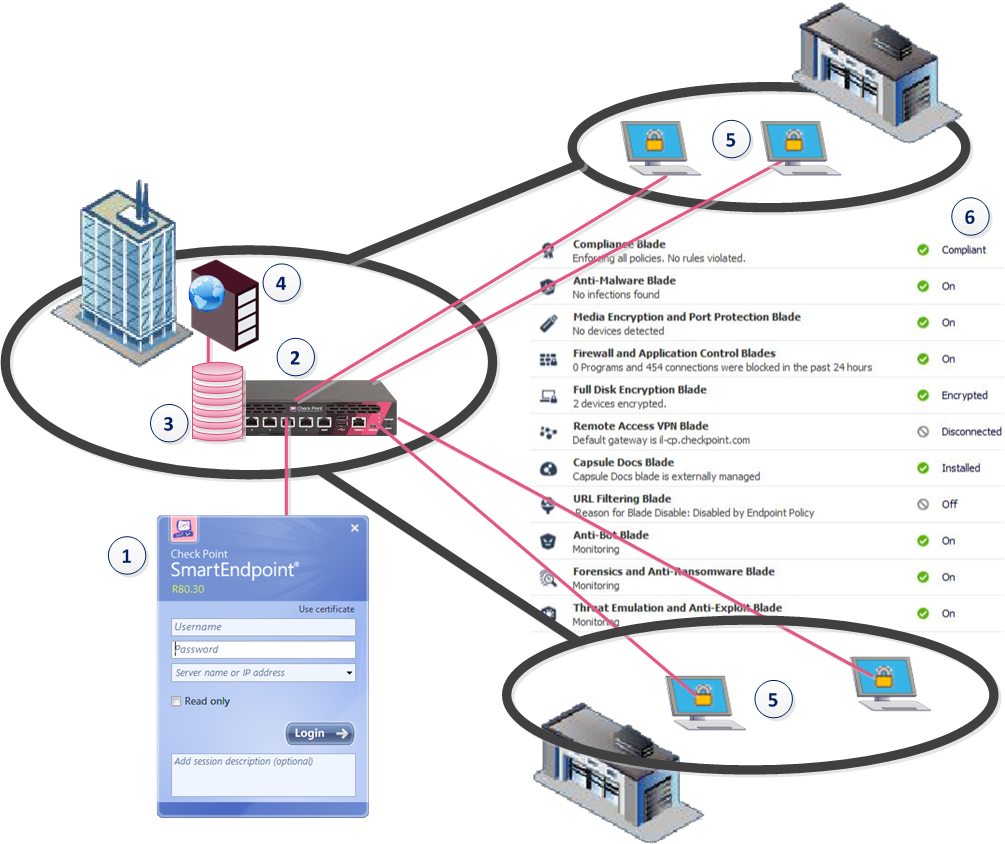


In This Section: |
Endpoint Security is a Management Software Blade in a Check Point Security Management Server. SmartEndpoint is the management console for Endpoint Security clients and their features.
Endpoint Security Features:
An Endpoint Security environment includes SmartEndpoint, Endpoint Security Management Server, and Endpoint Security clients. It is integrated with the Check Point Security Management and SmartConsole.
Endpoint Security Management Server
Item |
Description |
SmartEndpoint |
Check Point SmartConsole application to deploy, monitor and configure Endpoint Security clients and policies. Install on the Endpoint Security Management Server or on a computer that supports the client installation. |
Endpoint Security Management Server |
Software Blade on Security Management Server with Endpoint Security policy management and databases. It communicates with endpoint clients to update their policies and protection data. |
Endpoint Security Blades |
Software blades available on the Endpoint Security Management Server. You can install any or all of these blades on endpoint clients. See Software Blades. |
Endpoint Security Database |
Holds policies that enforce security on endpoint clients, holds user and computer objects, licensing, and Endpoint monitoring data. |
Directory Scanner |
Software component that synchronizes the structure and contents of the Active Directory with the Endpoint Security policy database. |
Endpoint Security Clients
Item |
Description |
||
|---|---|---|---|
Endpoint Security Clients |
Application installed on end-user computers to monitor security status and enforce security policies. |
||
Endpoint Agent |
Endpoint Security software on client computers. It operates as a container for Software Blades deployed on the endpoint client and communicates with the Endpoint Security Management Server. (Endpoint Agent is also known as the Device Agent or DA) |
||
Endpoint Security Blades |
Software blades deployed on the endpoint client. |
||
|
Note - When the term Endpoint Security Management Server is used, it refers to all Endpoint Security Servers in the environment. This includes Endpoint Security Management Servers or Endpoint Policy Servers. |
||
To make sure that your Endpoint Security system runs efficiently and without unnecessary down time, you can also include these components in your system architecture:


Endpoint Security operations are implemented by different services on the Endpoint Security Management Server, SmartEndpoint, and Endpoint Security clients.
|
Important - Make sure that these services and ports are not blocked by Firewall rules. To do so, connect to SmartConsole and SmartEndpoint on the Endpoint Security Management Server. In SmartConsole, explicit rules are in Security Policies tab > Access Control. See implied rules in Security Policies tab > Access Control > Actions > Implied Rules |
Services used by the client to communicate with the Endpoint Security Management Server:
Client to Server Service |
Protocol |
Port |
Notes |
|---|---|---|---|
|
HTTP |
TCP/80 |
|
|
HTTPS |
TCP/443 |
Used to encrypt messages sent using the Endpoint Security Encrypted Protocol |
|
ESP Encrypted |
TCP/80 |
Heartbeat, communicates policy, status and compliance changes. |
|
ESP Encrypted |
TCP/443 |
|
SmartEndpoint uses SIC to reach the Endpoint Security Management Server:
Service |
Protocol |
Port |
|---|---|---|
Check Point Secure Internal Communication |
SIC |
TCP/18190 - 18193 |
Before installing Endpoint Security Management Server, make sure these ports are not blocked:
TCP Port |
Reserved for: |
|---|---|
8080 |
Communication between Security Management Server and Directory Scanner to Tomcat |
8009 |
Communication between Apache and Tomcat |
1080 |
SOCKS Proxy |